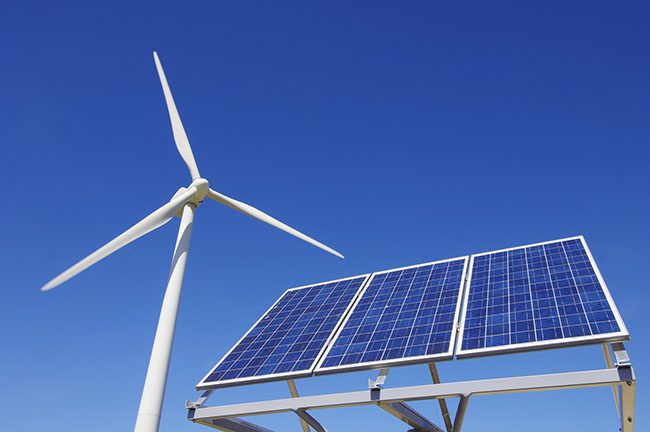Green Energy Is Happening Because Of Steel

When one thinks of steel, you probably do not picture green energy. Contrary to popular opinion, the steel industry really is a trailblazer for environmental protection and sustainable practices. Let’s take a look at the many ways in which the steel industry is advancing green energy.
Steel is Facilitating the Green Energy Boom
Most people are shocked to learn steel plays an important role in the conversion of solar energy into electricity as well as hot water. It serves as a base for solar thermal panels, heat exchanges, tanks, and pumps. Steel pile is the primary component of the tidal turbines used in tidal energy systems. This material is required to fabricate wave energy devices. Steel is formulated to take on the rigors of the harsh marine environment. It is used for the fabrication of wave energy devices. Steel is even used in the context of hydroelectricity as it is essential to the reinforcement of concrete dams.
Each of these energy sources is growing increasingly important as time progresses. An energy crisis is brewing in the coming decades. According to the International Energy Agency, the worldwide demand for energy will increase by nearly one-third by 2040. Unfortunately, upwards of half a billion people will still lack electricity at this point in time. Steel is proving its worth for the facilitation of the generation, distribution, and efficiency of energy.
Steel’s use in the Context of Fossil Fuel-based Energy
Everyone is dependent on fossil fuels for one purpose or another. We need gas for our automobiles, natural gas for our ovens, and so on. Steel is used for an array of fossil fuel and nuclear energy purposes. Steel plays an important role in the extraction and production of oil and gas. The pipes and storage tanks required to transport gas and oil require a considerable amount of steel. It is also used in offshore oil platforms, mining equipment, and power plants. Steel is even used in small-sized nuclear reactors.
The Role of Steel for Energy Transportation and Distribution
Steel is essential for the construction and operation of everything from trains to trucks, ships and beyond. Each of these vehicles transports fuel. Furthermore, steel is used for rail tracks, tunnels and bridges transportation vessels require to deliver fuel to the masses. Steel is also essential to the construction of buildings like airports, train stations, ports etc. Add in the fact that steel is used in generators, electric motors, transformers and reinforced cables for the distribution of electricity and it is easy to understand why this material is fundamental to maintaining our high quality of life. If you are wondering how steel is used in such materials, consider the fact that steel reinforces cables and serves as the core component of transformers.
Highly Innovative Steel Solutions for Heightened Efficiency
The steel used in today’s transformers contributes to a 35 percent energy reduction compared to traditional transformers. The magnetic core of every transformer is comprised of steel. As steel grades are improved, the reduction in energy loss will only continue to improve.
Steel designed to withstand especially high temperatures has boosted the efficiency of steam power plants. Steel pipes are necessary for transporting waste heat created at these plants. Waste heat is used to generate power, heat energy and also to improve fossil fuel power plant efficiency.
Steel’s use for Those Incredibly Efficient Wind Turbines
Take a look at the wind turbines in your city and you will find steel is the primary material used for their construction. This is true for onshore as well as off-shore wind turbines. Nearly every single component of these turbines is made with steel. This includes turbine foundations, casings, gears and the towers. Steel is the foundation for ever-taller, stronger and more efficient wind turbines that are capable of generating an ever-increasing amount of energy as time progresses.
The beauty of wind energy is that it does not cause any sort of pollution to our planet’s air, water or land. Nor does wind energy generate harmful greenhouse gases. Wind turbines do not emit carbon dioxides like other sources that are coal or natural gas-based. All it takes is a couple months of operation for wind turbines to recoup the energy required for their construction and operation. These wind turbines would not be nearly as tall, formidable and efficient if steel was not available for their construction.
Why Steel is so Important for Wind-generated Energy
Steel is so strong that it can hold turbine blades in place when they rotate at fast rates of speed. Steel is also the robust material required for turbines’ machinery and nacelle frame. A nacelle can weigh upwards of 300 tons. It requires electrical steel for risk-free operation and sufficient durability. Just about every large tubular wind turbine makes use of steel in its towers. Each section of these towers makes use of flanges at the ends. Steel provides the strength necessary to serve as a formidable base, supporting the incredibly heavy weight of the turbine above. Steel is flexible to the point that it permits the tubular steel tower conical shape without flaw.
Steel is also relied upon for the construction of lattice turbine towers, hybrid towers, and bolted towers. Lattice towers are built with welded steel profiles that allow the wind turbine to function with minimal materials.
Steel hybrid towers are optimal for especially tall turbines. Such steel-concrete hybrids are likely the wave of the future when it comes to wind power. Steel is used in the upper portions while concrete is used towards the base.
Steel is now Synonymous With Green Energy
From steel’s extensive uses for wind power to its role in converting solar energy into electricity and water, this material is playing an important role in green energy. It is clear that steel is essential to the future of a planet with limited natural resources.


